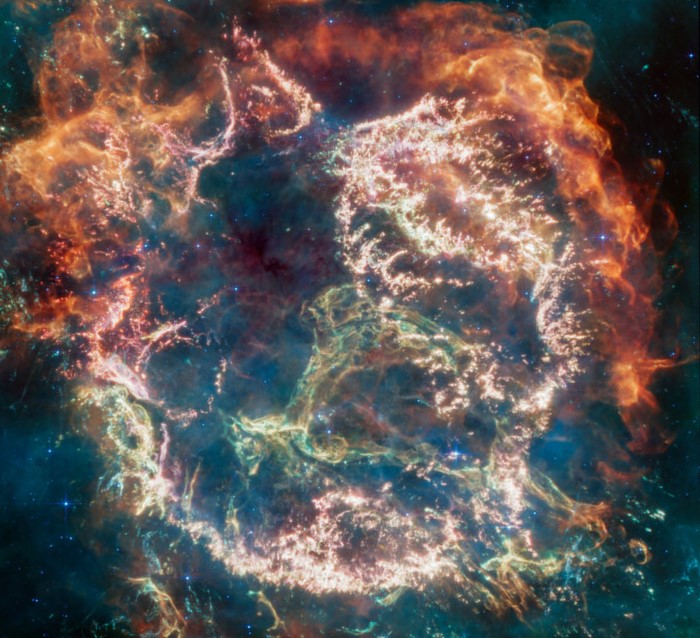Cosmos Cas A
Some stars know how to make an exit. Here’s the newest image from the James Webb Space Telescope, released on April 7, 2023. It shows what’s called a supernova remnant – a giant expanding cloud of debris in space – which earthly astronomers call Cassiopeia A, or Cas A. This cloudy shroud is what remains of a massive star that exploded, from Earth’s perspective, some 340 years ago. Of course, for any Cassiopeians living near this star, which is 11,000 light-years from Earth, the event happened more than 11,000 years ago. While the supernova should have been bright enough for earthlings to see as a “new” star in the night sky in the 1690s, no one has yet found a record of anyone’s having witnessed it.
Located in the direction of the constellation Cassiopeia, Cas A is the brightest radio source in our sky, apart from our sun. Webb imaged the supernova remnant in the infrared, which is between visible and radio on the electromagnetic spectrum.
At 340 years old, Cas A is the 2nd-youngest supernova remnant we know in our Milky Waygalaxy. The youngest is G1.9+0.3 – only 150 years old – located in the direction of the constellation Sagittarius.
